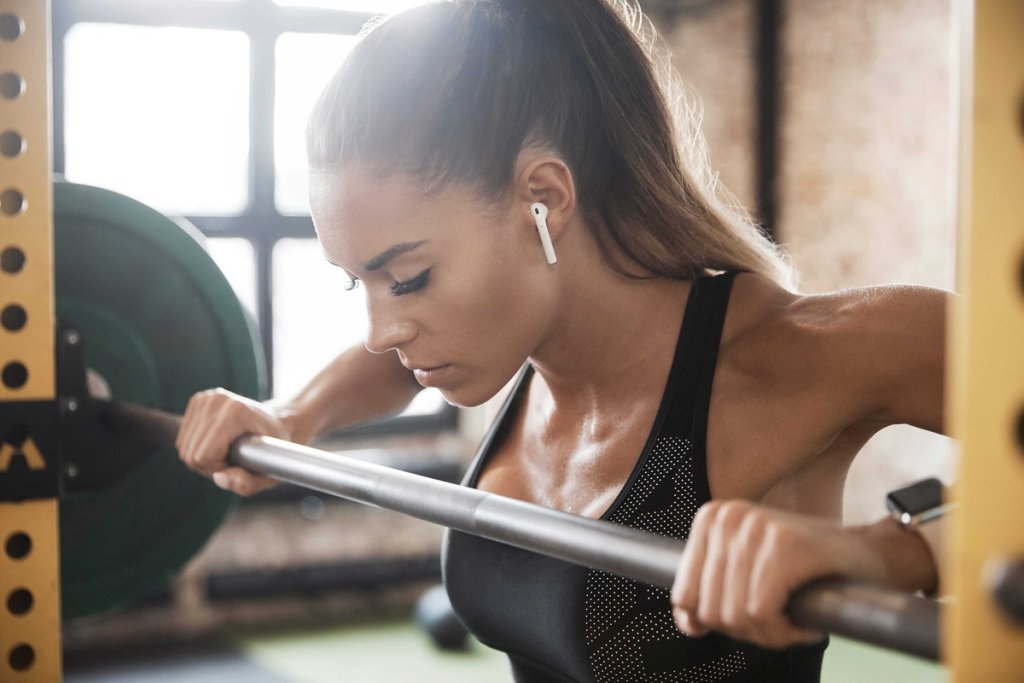4 Ways To Recover After Heavy Lifting Workouts

November 4, 2019

So, you’ve finished your strength training workout. You’ve pushed hard, broken a sweat and beaten your personal best. You’re feeling amazing. How do you keep the momentum going? By looking after your body, recovering properly and giving your muscles time to repair.
It’s common to think that in order to keep smashing your goals and getting stronger, the best idea is to spend more time working out, but that’s not true!
Whether you’re starting out or reaching new milestones, it’s really important to take time for recovery at every stage of your fitness journey. Skipping recovery can actually delay your body’s ability to grow muscle and slow down your progress.
When it comes to workout recovery, there are lots of things to consider; from active stretching to nutrition to getting enough sleep. Here are some of the essential ways to take care of your body and make sure you’re in top form to nail your next lifting session.
Why is recovery so important?
Whether you’re doing a squat, bench press or deadlift, lifting uses a lot of energy and puts your body and muscles under stress.
Lifting weights causes micro-tears to your muscle fibres because they’re being exposed to heavier loads than they would experience in everyday life. This muscle damage is why you experience pain, or DOMS (delayed-onset muscle soreness), in the days following a heavy-lifting session. Makes sense, right?
During your recovery these small tears heal, helping your muscles grow in strength and size. Our bodies are pretty damn amazing.
If you’re familiar with the BUILD program in the Sweat app, you’ll know that progressive overload plays an important part.
Basically, the workouts gradually increase in intensity to help you build strength. Recovery is key to successful progressive overload, as your muscles are continually being put under more stress and they need time to repair themselves.
4 ways to recover after heavy lifting
Regular recovery sessions will help you get the most out of BUILD, by increasing muscle growth, preventing injury and getting you back in the gym as quickly and safely as possible. Here are four great ways to recover after a weightlifting workout.
1. Complete an active recovery session
Active recovery, or a rehabilitation session, can help reduce soreness and increase circulation to speed up your body’s natural healing process. It can also help lessen muscle fatigue.
What is active recovery? Think light activity that promotes blood flow, such as walking, swimming, foam rolling, cycling or a stretching session. Any low-intensity movement that gets your blood flowing is great for active recovery.
In the Recovery section of the BUILD program, you’ll find a bunch of active recovery sessions designed especially for powerbuilding. These include:
Foam rolling
Finishing your heavy-lifting workout with a foam rolling session is a great way to reduce soreness.
Foam rolling is a form of self-massage or “self-myofascial release”, which helps reduce tension in your muscles after a workout by targeting specific parts of your body you may struggle to stretch out. You’ll find a series of targeted foam rolling sessions in the app, which we strongly suggest you do after each workout.
Static stretching
A static stretch is a deep stretch where you hold the same position for about 30-60 seconds. Static stretching should be done after your BUILD session when your muscles are already warm.
Apart from making you feel amazing, static stretching can increase your mobility and range of motion, which will come in handy as you move on to new exercises in the program.
Focus on the muscles that feel particularly tight - this will differ from workout to workout.

2. Eat the right foods
When it comes to your powerbuilding diet and workout recovery, there are lots of things to consider.
Lifting weights depletes your glycogen stores for energy and fuel, so it’s important to rebuild these stores once you’ve finished at the gym. Certain foods can help speed up this process.
So what should you eat straight after a BUILD workout? Restore your body’s energy with carbohydrates and protein. For a meal, think whole grains and starchy vegetables combined with lean protein. For a snack, this could be rice cakes with tuna or peanut butter and banana.
There are also some general things to consider for your diet to help with recovery. Including plenty of protein, such as meat, eggs, tofu and beans, helps your body to repair muscle damage. It also helps reduce your risk of injury from overtraining. Whether you’re a meat-eater or prefer to consume a plant-based diet, find what protein sources work best for you.
One of the most important things when it comes to a balanced diet? Making sure you’re drinking plenty of water. Working out dehydrates your body, so you need to stay hydrated before, during and after a heavy-lifting session. Bring your own drink bottle so you don’t forget!
3. Sleep for at least eight hours
You’ve no doubt heard this one before, but getting eight hours of quality sleep has loads of benefits that go way beyond feeling well-rested.
The more intense your heavy-lifting workout, the more your muscles will break down and the more time they’ll need to recover. Your muscles will start to repair themselves as soon as you stop lifting, but a good night’s sleep is essential for proper recovery.
Having a bad sleep or not getting enough shut-eye can get in the way of your body’s ability to build muscle and recover. Naps can help too if you struggle with sleep!

4. Rest for a full day
There’s no denying the benefits of a rest day. That’s why BUILD includes six different workouts each week and one rest day, where you take a complete break from training.
If you need to take an extra day or two, that’s totally fine. It’s important to look after yourself, listen to your body and avoid overtraining. Rest when you’re tired, or train different areas of your body if certain muscles are sore.
Listening to your body is also important when it comes to the weights you’re lifting, the time you spend resting between reps and the frequency of your workouts. Ultimately, if your body says no, listen. You’ve only got one, after all.
Recovery is key to muscle growth
Workout recovery is such an important part of the BUILD powerbuilding program. While you might be short on time, looking after your body and resting up should always be a priority - it’s key if you want to see results!
Warm up, foam roll, stretch, keep your body moving, eat the right foods, get plenty of sleep and take a day or two to rest. You’ll feel all the better for it, and you’ll bounce back quicker, too!

A more empowered you starts with Sweat, and our editorial team is here to bring you the latest fitness tips, trainer recommendations, wellbeing news, nutritional advice, nourishing recipes and free workouts.
* Disclaimer: This blog post is not intended to replace the advice of a medical professional. The above information should not be used to diagnose, treat, or prevent any disease or medical condition. Please consult your doctor before making any changes to your diet, sleep methods, daily activity, or fitness routine. Sweat assumes no responsibility for any personal injury or damage sustained by any recommendations, opinions, or advice given in this article.
Fitness